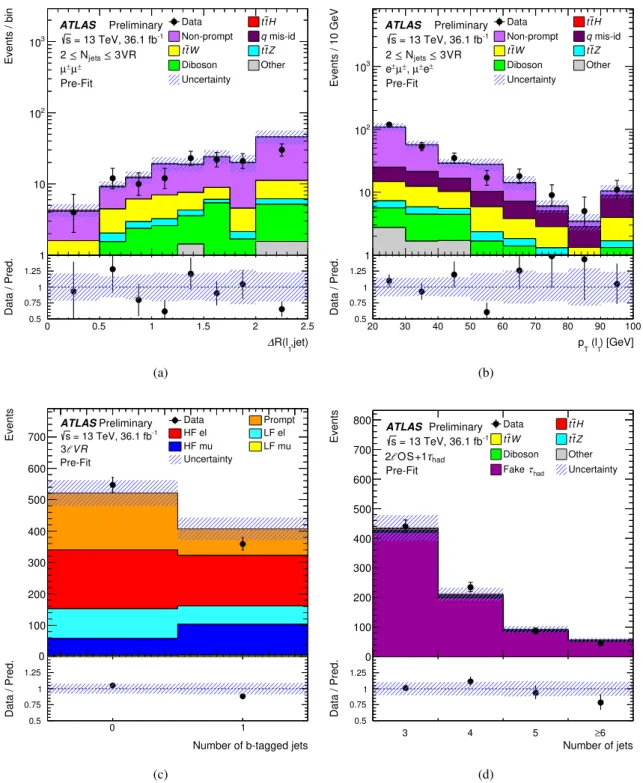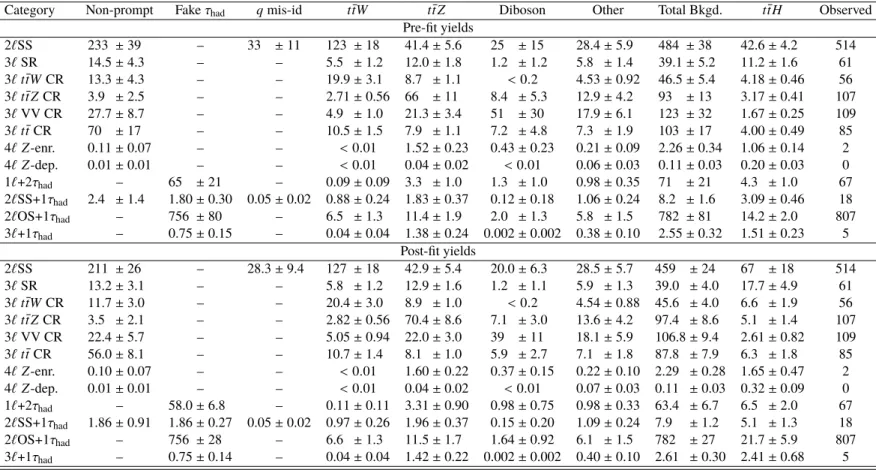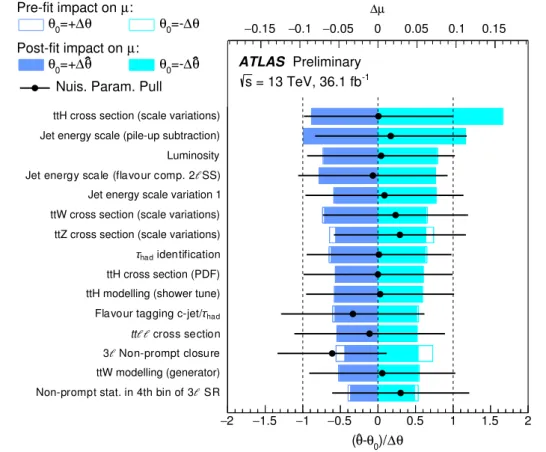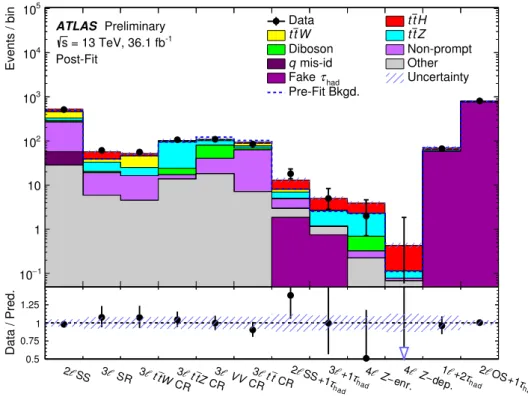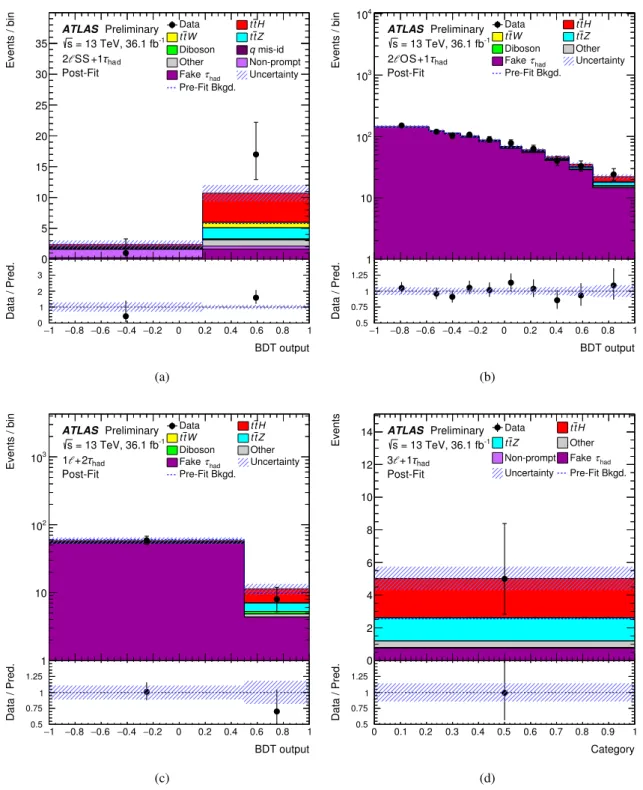Evidence for the associated production of the Higgs boson and a top quark pair with the ATLAS
Volltext
Abbildung

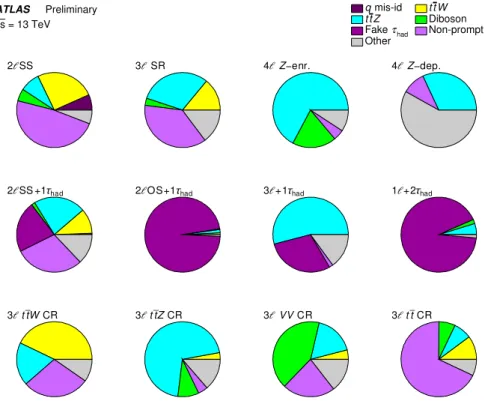
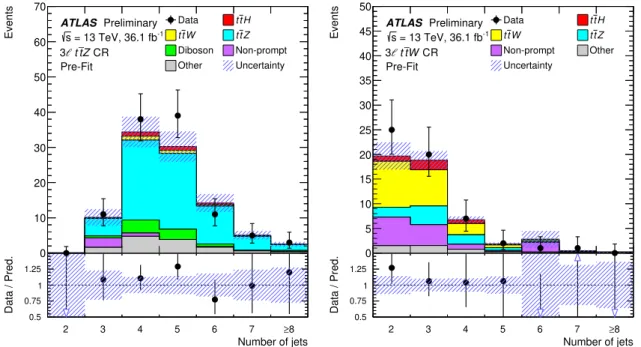
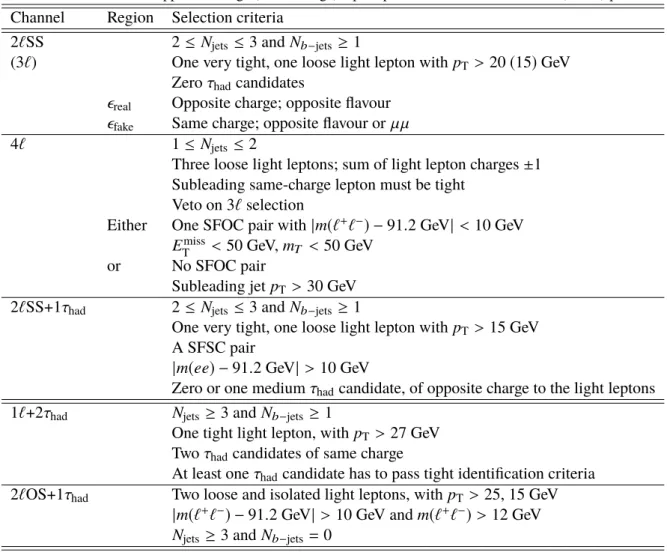
ÄHNLICHE DOKUMENTE
The Higgs boson signal (m H = 125 GeV) is shown as filled histograms on top of the fitted backgrounds both after the global fit (indicated as “best fit”) and as expected from the SM
In the 3-lepton analysis the total experimental uncertainty, including the 3.6% contribution from the luminosity determination, is 5% for the signal in both regions, while for
For the backgrounds normalised using CRs (WW for the N jet = 0 and N jet = 1 analyses and top in the N jet = 1 and ≥ 2 analyses), the sources of uncertainty can be grouped into
This analysis also probes the spin and parity (J P ) using the H → ZZ (∗) → 4` decay, through the observed distributions of the two Z (∗) boson masses, one production angle and
The invariant mass distributions and their composition obtained from the high-statistics simulation model based on SHERPA for the diphoton component have been cross checked against
The dashed curves show the median expected local p 0 under the hypothesis of a Standard Model Higgs boson production signal at that mass.. The horizontal dashed lines indicate
● We had already good hints where to expect the Higgs ( according to the SM ) from high precision Z-pole measurements. ● Direct searches @ LEP and @ Tevatron remained inconclusive,
Figure 2: Left: Distribution of signal (red histogram), background (grey histogram) and data events sorted in similar signal-to-background ratio obtained from the fit to
